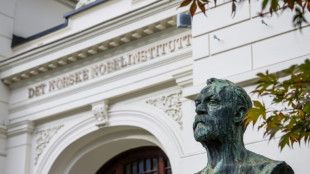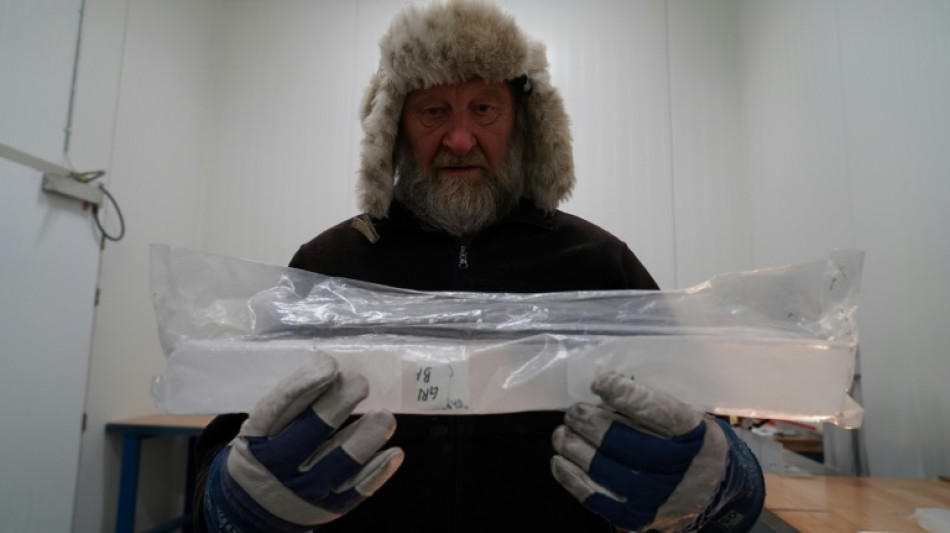
-
 Britain's storied Conservative party faces uncertain future
Britain's storied Conservative party faces uncertain future
-
New Zealand's seas warming faster than global average: report
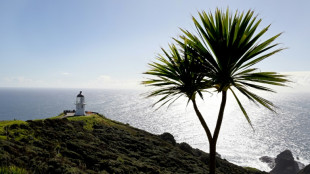
-
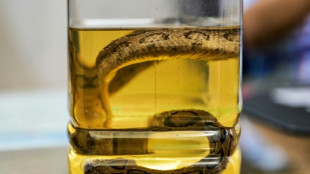 Snakebite surge as Bangladesh hit by record rains
Snakebite surge as Bangladesh hit by record rains
-
Yankees deny Blue Jays playoff sweep as Mariners beat Tigers

-
 Australia police foil 'kill team' gang hit near daycare centre
Australia police foil 'kill team' gang hit near daycare centre
-
US, Qatar, Turkey to join third day of Gaza peace talks in Egypt

-
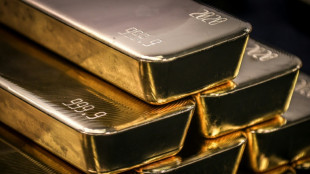 Gold tops $4,000 for first time as traders pile into safe haven
Gold tops $4,000 for first time as traders pile into safe haven
-
Indian garment exporters reel under US tariffs

-
 NBA back in China after six-year absence sparked by democracy tweet
NBA back in China after six-year absence sparked by democracy tweet
-
Energy storage and new materials eyed for chemistry Nobel
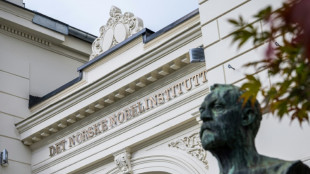
-
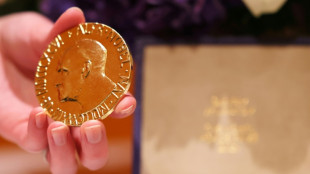 Trump unlikely to win Nobel Peace Prize, but who will?
Trump unlikely to win Nobel Peace Prize, but who will?
-
Qatar, Turkey to join third day of Gaza peace talks in Egypt

-
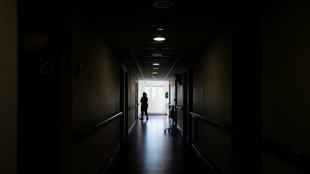 Study finds women have higher genetic risk of depression
Study finds women have higher genetic risk of depression
-
Dolly Parton's sister calls for fan prayers over health issues

-
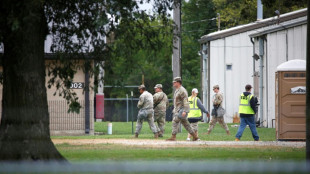 On Trump's orders, 200 troops from Texas arrive in Illinois
On Trump's orders, 200 troops from Texas arrive in Illinois
-
Two bodies found, two missing after Madrid building collapse
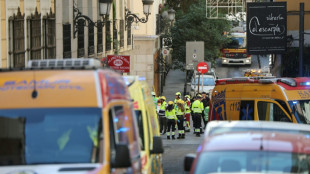
-
 Panthers raise banner as NHL three-peat bid opens with win
Panthers raise banner as NHL three-peat bid opens with win
-
Nobel physics laureate says Trump cuts will 'cripple' US research
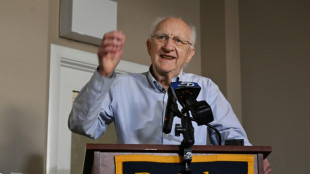
-
 UFC star McGregor suspended 18 months over missed drug tests
UFC star McGregor suspended 18 months over missed drug tests
-
Trump talks up Canada trade deal chances with 'world-class' Carney

-
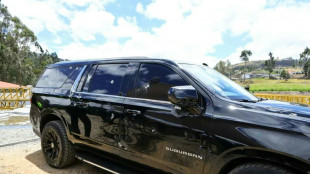 Ecuador president unharmed after apparent gun attack on motorcade
Ecuador president unharmed after apparent gun attack on motorcade
-
Lyon exact revenge on Arsenal, Barca thrash Bayern in women's Champions League

-
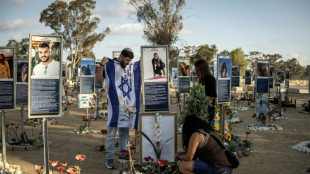 Trump says 'real chance' to end Gaza war as Israel marks attacks anniversary
Trump says 'real chance' to end Gaza war as Israel marks attacks anniversary
-
Gerrard brands failed England generation 'egotistical losers'

-
 NFL fines Cowboys owner Jones $250,000 over gesture to fans
NFL fines Cowboys owner Jones $250,000 over gesture to fans
-
Bengals sign veteran quarterback Flacco after Burrow injury

-
 New prime minister inspires little hope in protest-hit Madagascar
New prime minister inspires little hope in protest-hit Madagascar
-
Is Trump planning something big against Venezuela's Maduro?

-
 EU wants to crack down on 'conversion therapy'
EU wants to crack down on 'conversion therapy'
-
French sex offender Pelicot says man who abused ex-wife knew she was asleep
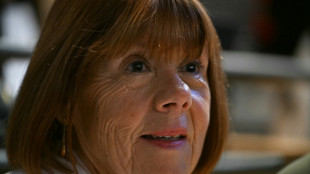
-
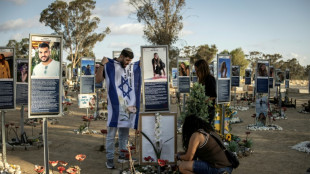 Trump says 'real chance' to end Gaza war as Israel marks Oct 7 anniversary
Trump says 'real chance' to end Gaza war as Israel marks Oct 7 anniversary
-
UK prosecutors to appeal dropped 'terrorism' case against Kneecap rapper

-
 Spain, Inter Miami star Alba retiring at end of season
Spain, Inter Miami star Alba retiring at end of season
-
EU targets foreign steel to rescue struggling sector
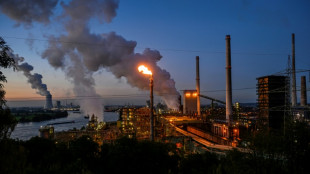
-
 Trump talks up Canada deal chances with visiting PM
Trump talks up Canada deal chances with visiting PM
-
Knight rides her luck as England survive Bangladesh scare

-
 Pro-Gaza protests flare in UK on anniversary of Hamas attack
Pro-Gaza protests flare in UK on anniversary of Hamas attack
-
Top rugby unions warn players against joining rebel R360 competition

-
 Outcast Willis 'not overthinking' England absence despite Top 14 clean sweep
Outcast Willis 'not overthinking' England absence despite Top 14 clean sweep
-
Trump says 'real chance' of Gaza peace deal

-
 Macron urged to quit to end France political crisis
Macron urged to quit to end France political crisis
-
No.1 Scheffler seeks three-peat at World Challenge

-
 Canadian PM visits Trump in bid to ease tariffs
Canadian PM visits Trump in bid to ease tariffs
-
Stocks falter, gold shines as traders weigh political turmoil
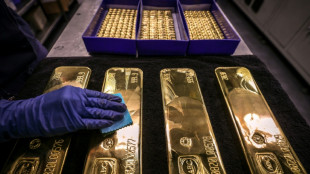
-
 Senators accuse US attorney general of politicizing justice
Senators accuse US attorney general of politicizing justice
-
LeBron's 'decision of all decisions' a PR stunt

-
 Observing quantum weirdness in our world: Nobel physics explained
Observing quantum weirdness in our world: Nobel physics explained
-
WTO hikes 2025 trade growth outlook but tariffs to bite in 2026
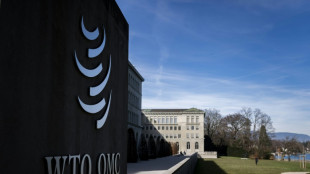
-
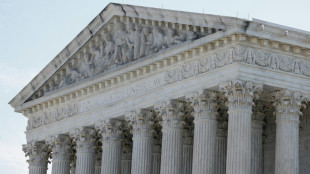 US Supreme Court hears challenge to 'conversion therapy' ban for minors
US Supreme Court hears challenge to 'conversion therapy' ban for minors
-
Italy's Gattuso expresses Gaza heartache ahead of World Cup qualifier with Israel


Frozen library of ancient ice tells tales of climate's past
How was the air breathed by Caesar, the Prophet Mohammed or Christopher Columbus? A giant freezer in Copenhagen holds the answers, storing blocks of ice with atmospheric tales thousands of years old.
The Ice Core Archive, housing 25 kilometres (15 miles) of ice collected primarily from Greenland, is helping scientists understand changes in the climate.
"What we have in this archive is prehistoric climate change, a record of man's activities in the last 10,000 years," glaciology professor Jorgen Peder Steffensen of the University of Copenhagen told AFP.
Blocks of ice have been his passion for 43 years -- and it was while drilling into Greenland's ice sheet that he met his wife Dorthe Dahl-Jensen, also a top expert in the field of paleoclimatology.
Steffensen has since 1991 managed the repository, one of the biggest in the world, with 40,000 blocks of ice stacked on long rows of shelves in large boxes.
The frozen samples are unique, made up of compressed snow and not frozen water.
"All the airspace between the snowflakes is trapped as bubbles inside (and) the air inside these bubbles is the same age as the ice," Steffensen explained.
The repository's antechamber is similar to a library's reading room: this is where scientists can examine the ice they have withdrawn from the main "library", or storage room.
But they must be quick: the temperature in the antechamber is kept at -18 degrees Celsius (-0.4F) -- decidedly balmy compared to the -30C (-22F) in the storage room.
Here, Steffensen removes a block of ice from a box. Its air bubbles are visible to the naked eye: it's snow that fell during the winter of year zero.
"So we have the Christmas stuff, the real Christmas snow," says Steffensen with a big grin, his head covered in a warm winter bonnet with furry ear flaps.
- Bedrock -
A team of researchers brought the first ice cores to Denmark in the 1960s from Camp Century, a secret US military base on Greenland.
The most recent ones date from this summer, when scientists hit the bedrock on eastern Greenland at a depth of 2.6 kilometres, gathering the oldest ice possible.
Those samples contain extracts from 120,000 years ago, during the most recent interglacial period when air temperatures in Greenland were 5C higher than today.
"The globe has easily been much warmer than it is today. But that's before humans were there," Steffensen said.
This recently acquired ice should help scientists' understanding of rising sea levels, which can only be partly explained by the shrinking ice cap.
Another part of the explanation comes from ice streams, fast-moving ice on the ice sheet that is melting at an alarming rate.
"If we understand the ice streams better, we can get a better idea of how much the contribution will be (to rising sea levels) from Greenland and Antarctica in the future," Steffensen said.
He hopes they'll be able to predict the sea level rise in 100 years with a margin of error of 15 centimetres -- a big improvement over today's 70 centimetres.
- 'Treasure' -
Ice cores are the only way of determining the state of the atmosphere prior to man-made pollution.
"With ice cores we have mapped out how greenhouse gases, carbon dioxide and methane vary over time," Steffensen said.
"And we can also see the impact of the burning of fossil fuels in modern times."
This project is separate from the Ice Memory foundation, which has collected ice cores from 20 sites worldwide to preserve them for future researchers at the French-Italian Concordia research station in Antarctica, before they disappear forever due to climate change.
"Storing Greenland's ice memory is very good," said the head of the foundation, Jerome Chappellaz.
But, he noted, the storage of samples in an industrial freezer is susceptible to technical glitches, funding woes, attacks, or even wars.
In 2017, a freezer that broke down at the University of Alberta in Canada exposed 13 percent of its precious samples thousands of years old to undesirably warm temperatures.
At Concordia Station, the average annual temperature is -55C, providing optimal storage conditions for centuries to come.
"They have a treasure," said Chappellaz, appealing to the Danes to join Concordia's project.
"We must protect this treasure and, as far as possible, ensure that it joins mankind's world heritage."
R.Buehler--VB

